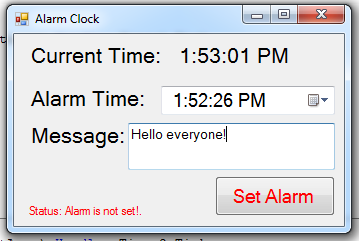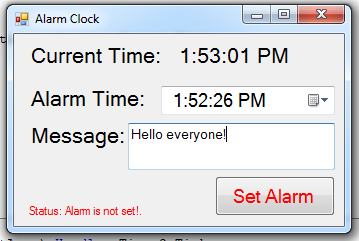What?
It's possible that, at this point, the only thought in your mind is, "What the heck is PDO?" Well, it's one of PHP's three available APIs for connecting to a MySQL database. "Three," you say? Yes; many folks don't know it, but there are three different APIs for connecting:
mysqlmysqli – MySQL Improvedpdo – PHP Data Objects
The traditional
mysql API certainly gets the job done, and has become so popular largely due to the fact that it makes the process of retrieving some records from a database as easy as possible. For example:
/*
* Anti-Pattern
*/
# Connect
mysql_connect('localhost', 'username', 'password') or die('Could not connect: ' . mysql_error());
# Choose a database
mysql_select_db('someDatabase') or die('Could not select database');
# Perform database query
$query = "SELECT * from someTable";
$result = mysql_query($query) or die('Query failed: ' . mysql_error());
# Filter through rows and echo desired information
while ($row = mysql_fetch_object($result)) {
echo $row->name;
}
Yes, the code above is fairly simple, but it does come with its significant share of downsides.
- Deprecated: Though it hasn't been officially deprecated – due to widespread use – in terms of best practice and education, it might as well be.
- Escaping: The process of escaping user input is left to the developer – many of which don't understand or know how to sanitize the data.
- Flexibility: The API isn't flexible; the code above is tailor-made for working with a MySQL database. What if you switch?
PDO, or PHP Data Objects, provides a more powerful API that doesn't care about the driver you use; it's database agnostic. Further, it offers the ability to use prepared statements, virtually eliminating any worry of SQL injection.
How?
When I was first learning about the PDO API, I must admit that it was slightly intimidating. This wasn't because the API was overly complicated (it's not) – it's just that the old
myqsl API was so dang easy to use!
Don't worry, though; follow these simple steps, and you'll be up and running in no time.
Connect
So you already know the legacy way of connecting to a MySQL database:
# Connect
mysql_connect('localhost', 'username', 'password') or die('Could not connect: ' . mysql_error());
With PDO, we create a new instance of the class, and specify the driver, database name, username, and password – like so:
$conn = new PDO('mysql:host=localhost;dbname=myDatabase', $username, $password);
Don't let that long string confuse you; it's really very simple: we specify the name of the driver (mysql, in this case), followed by the required details (connection string) for connecting to it.
What's nice about this approach is that, if we instead wish to use a sqlite database, we simply update the DSN, or "Data Source Name," accordingly; we're not dependent upon MySQL in the way that we are when use functions, like
mysql_connect.
Errors
But, what if there's an error, and we can't connect to the database? Well, let's wrap everything within a
try/catch block:
try {
$conn = new PDO('mysql:host=localhost;dbname=myDatabase', $username, $password);
$conn->setAttribute(PDO::ATTR_ERRMODE, PDO::ERRMODE_EXCEPTION);
} catch(PDOException $e) {
echo 'ERROR: ' . $e->getMessage();
}
That's better! Please note that, by default, the default error mode for PDO is
PDO::ERRMODE_SILENT. With this setting left unchanged, you'll need to manually fetch errors, after performing a query.
echo $conn->errorCode();
echo $conn->errorInfo();
Instead, a better choice, during development, is to update this setting to
PDO::ERRMODE_EXCEPTION, which will fire exceptions as they occur. This way, any uncaught exceptions will halt the script.
For reference, the available options are:
PDO::ERRMODE_SILENTPDO::ERRMODE_WARNINGPDO::ERRMODE_EXCEPTION
Fetch
At this point, we've created a connection to the database; let's fetch some information from it. There's two core ways to accomplish this task:
query and
execute. We'll review both.
Query
/*
* The Query Method
* Anti-Pattern
*/
$name = 'Joe'; # user-supplied data
try {
$conn = new PDO('mysql:host=localhost;dbname=myDatabase', $username, $password);
$conn->setAttribute(PDO::ATTR_ERRMODE, PDO::ERRMODE_EXCEPTION);
$data = $conn->query('SELECT * FROM myTable WHERE name = ' . $conn->quote($name));
foreach($data as $row) {
print_r($row);
}
} catch(PDOException $e) {
echo 'ERROR: ' . $e->getMessage();
}
Though this works, notice that we're still manually escaping the user's data with the
PDO::quote method. Think of this method as, more or less, the PDO equivalent to use
mysql_real_escape_string; it will both escape and quote the string that you pass to it. In situations, when you're binding user-supplied data to a SQL query, it's strongly advised that you instead use prepared statements. That said, if your SQL queries are not dependent upon form data, the
query method is a helpful choice, and makes the process of looping through the results as easy as a
foreach statement.
Prepared Statements
/*
* The Prepared Statements Method
* Best Practice
*/
$id = 5;
try {
$conn = new PDO('mysql:host=localhost;dbname=myDatabase', $username, $password);
$conn->setAttribute(PDO::ATTR_ERRMODE, PDO::ERRMODE_EXCEPTION);
$stmt = $conn->prepare('SELECT * FROM myTable WHERE id = :id');
$stmt->execute(array('id' => $id));
while($row = $stmt->fetch()) {
print_r($row);
}
} catch(PDOException $e) {
echo 'ERROR: ' . $e->getMessage();
}
In this example, we're using the
prepare method to, literally, prepare the query, before the user's data has been attached. With this technique, SQL injection is virtually impossible, because the data doesn't ever get inserted into the SQL query, itself. Notice that, instead, we use named parameters (
:id) to specify placeholders.
Alternatively, you could use ? parameters, however, it makes for a less-readable experience. Stick with named parameters.
Next, we execute the query, while passing an array, which contains the data that should be bound to those placeholders.
$stmt->execute(array('id' => $id));
An alternate, but perfectly acceptable, approach would be to use the
bindParam method, like so:
$stmt->bindParam(':id', $id, PDO::PARAM_INT);
$stmt->execute();
Specifying the Ouput
After calling the
execute method, there are a variety of different ways to receive the data: an array (the default), an object, etc. In the example above, the default response is used:
PDO::FETCH_ASSOC; this can easily be overridden, though, if necessary:
while($row = $stmt->fetch(PDO::FETCH_OBJ)) {
print_r($row);
}
Now, we've specified that we want to interact with the result set in a more object-oriented fashion. Available choices include, but not limited to:
- PDO::FETCH_ASSOC: Returns an array.
- PDO::FETCH_BOTH: Returns an array, indexed by both column-name, and 0-indexed.
- PDO::FETCH_BOUND: Returns TRUE and assigns the values of the columns in your result set to the PHP variables to which they were bound.
- PDO::FETCH_CLASS: Returns a new instance of the specified class.
- PDO::FETCH_OBJ: Returns an anonymous object, with property names that correspond to the columns.
One problem with the code above is that we aren't providing any feedback, if no results are returned. Let's fix that:
$stmt->execute(array('id' => $id));
# Get array containing all of the result rows
$result = $stmt->fetchAll();
# If one or more rows were returned...
if ( count($result) ) {
foreach($result as $row) {
print_r($row);
}
} else {
echo "No rows returned.";
}
At this point, our full code should look like so:
$id = 5;
try {
$conn = new PDO('mysql:host=localhost;dbname=someDatabase', $username, $password);
$stmt = $conn->prepare('SELECT * FROM myTable WHERE id = :id');
$stmt->execute(array('id' => $id));
$result = $stmt->fetchAll();
if ( count($result) ) {
foreach($result as $row) {
print_r($row);
}
} else {
echo "No rows returned.";
}
} catch(PDOException $e) {
echo 'ERROR: ' . $e->getMessage();
}
Multiple Executions
The PDO extension becomes particularly powerful when executing the same SQL query multiple times, but with different parameters.
try {
$conn = new PDO('mysql:host=localhost;dbname=someDatabase', $username, $password);
$conn->setAttribute(PDO::ATTR_ERRMODE, PDO::ERRMODE_EXCEPTION);
# Prepare the query ONCE
$stmt = $conn->prepare('INSERT INTO someTable VALUES(:name)');
$stmt->bindParam(':name', $name);
# First insertion
$name = 'Keith';
$stmt->execute();
# Second insertion
$name = 'Steven';
$stmt->execute();
} catch(PDOException $e) {
echo $e->getMessage();
}
Once the query has been prepared, it can be executed multiple times, with different parameters. The code above will insert two rows into the database: one with a name of “Kevin,” and the other, “Steven.”
CRUD
Now that you have the basic process in place, let’s quickly review the various CRUD tasks. As you’ll find, the required code for each is virtually identical.
Create (Insert)
try {
$pdo = new PDO('mysql:host=localhost;dbname=someDatabase', $username, $password);
$pdo->setAttribute(PDO::ATTR_ERRMODE, PDO::ERRMODE_EXCEPTION);
$stmt = $pdo->prepare('INSERT INTO someTable VALUES(:name)');
$stmt->execute(array(
':name' => 'Justin Bieber'
));
# Affected Rows?
echo $stmt->rowCount(); // 1
} catch(PDOException $e) {
echo 'Error: ' . $e->getMessage();
Update
$id = 5;
$name = "Joe the Plumber";
try {
$pdo = new PDO('mysql:host=localhost;dbname=someDatabase', $username, $password);
$pdo->setAttribute(PDO::ATTR_ERRMODE, PDO::ERRMODE_EXCEPTION);
$stmt = $pdo->prepare('UPDATE someTable SET name = :name WHERE id = :id');
$stmt->execute(array(
':id' => $id,
':name' => $name
));
echo $stmt->rowCount(); // 1
} catch(PDOException $e) {
echo 'Error: ' . $e->getMessage();
}
Delete
$id = 5; // From a form or something similar
try {
$pdo = new PDO('mysql:host=localhost;dbname=someDatabase', $username, $password);
$pdo->setAttribute(PDO::ATTR_ERRMODE, PDO::ERRMODE_EXCEPTION);
$stmt = $pdo->prepare('DELETE FROM someTable WHERE id = :id');
$stmt->bindParam(':id', $id); // this time, we'll use the bindParam method
$stmt->execute();
echo $stmt->rowCount(); // 1
} catch(PDOException $e) {
echo 'Error: ' . $e->getMessage();
}
Object Mapping
One of the neatest aspects of PDO (mysqli, as well) is that it gives us the ability to map the query results to a class instance, or object. Here’s an example:
class User {
public $first_name;
public $last_name;
public function full_name()
{
return $this->first_name . ' ' . $this->last_name;
}
}
try {
$pdo = new PDO('mysql:host=localhost;dbname=someDatabase', $username, $password);
$pdo->setAttribute(PDO::ATTR_ERRMODE, PDO::ERRMODE_EXCEPTION);
$result = $pdo->query('SELECT * FROM someTable');
# Map results to object
$result->setFetchMode(PDO::FETCH_CLASS, 'User');
while($user = $result->fetch()) {
# Call our custom full_name method
echo $user->full_name();
}
} catch(PDOException $e) {
echo 'Error: ' . $e->getMessage();
}




















